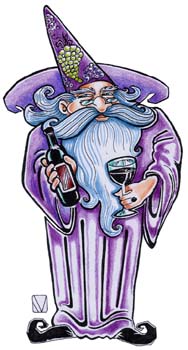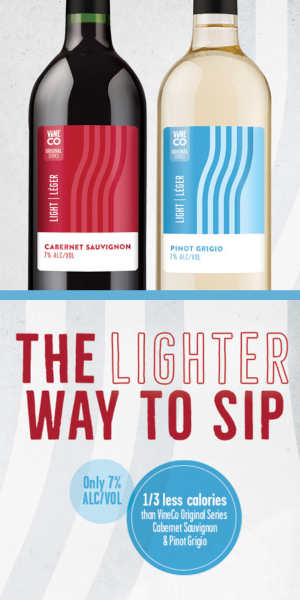 Many of our readers may not be aware that, indeed, for some wine styles and types, we winemakers actually add residual carbon dioxide gas (CO2) before bottling. A tiny bit of sub-threshold CO2 can actually provide a sensory “lift” or sense of freshness in the mouth, even if you wouldn’t necessarily call the wine bubbly. Dissolved carbon dioxide gas is easily dissolved in liquids, especially those that are cold (which is why a bottle of bubbly will go flat quickly if not chilled) and has a sensory threshold in wine of about 500 mg/L (ppm). When I’m bottling a white or rosé wine and I want a little lift, I try to bottle between 700–1500 mg/L.
Many of our readers may not be aware that, indeed, for some wine styles and types, we winemakers actually add residual carbon dioxide gas (CO2) before bottling. A tiny bit of sub-threshold CO2 can actually provide a sensory “lift” or sense of freshness in the mouth, even if you wouldn’t necessarily call the wine bubbly. Dissolved carbon dioxide gas is easily dissolved in liquids, especially those that are cold (which is why a bottle of bubbly will go flat quickly if not chilled) and has a sensory threshold in wine of about 500 mg/L (ppm). When I’m bottling a white or rosé wine and I want a little lift, I try to bottle between 700–1500 mg/L.
This small level is accomplished in commercial wineries by chilling down the stainless tank with glycol to about 35–40 °F (2–4 °C), then doing a gentle pump-through (racking valve back to top of the tank usually works well) with an in-line sparging stone on the outlet side that is hooked up to a CO2 cylinder on a slow bleed. The level of CO2 can then be checked with a carbodoser (a simple glass cylinder that is sealed, shaken and released — the wine that gets released is a relative measure of the dissolved gas) or if you have access to a fancy lab, by a titration. I also find that, absent both, and if I’m working with non-production volumes, I just go by taste and how the wine feels.
If I had a barrel or two and wanted to get a bit of CO2 in there, I might do something as simple as stopping a malolactic fermentation with SO2 and then making sure I stored the wine cold and bottled while the wine was still young (say, within a few months of stopping the fermentation) and still had some dissolved CO2 in it naturally. You could also get a hold of your beer-kegging buddies and see if they would lend you their set up — I’d wager you could get a nice level of CO2 in pre-bottle wine (you don’t want too much!) with a keg and someone’s lagering fridge. The one thing you want to be careful of is overdoing it, because if you get much over 1 bar of pressure, especially if you can’t store your wine in a cool place, you’re going to start having corks popping all over your cellar.
You mention Vinho Verde, or the famous “green wine” of Portugal. Red, white or rosé, Vinho Verde isn’t a grape varietal, as some people assume, but simply means “young” wine. It is meant to be consumed within a year of bottling and frequently has less than one bar of pressure, sometimes called “pétillant” rather than “sparkling.” Vinho Verde usually is bottled with some residual natural CO2 gas in it and then sometimes bottled on a counter-pressure line to maintain the CO2 level through the bottling process. I would bet that your homegrown bottling process is much more gentle so you won’t need to invest in the equipment, just make sure you bottle your wine while it still has some dissolved CO2. Sterile filter for clarity and to exclude microbes (necessary if you have any residual sugar or malic acid).
If all of the crazy terms we use for pressure and fizziness have got you cross-eyed, here are some figures to use for conversion. Winemaking manuals will often be in one term or the other so it’s important to be able to convert between them to make any sense of it. Here are some handy conversions and gassy facts:
- 1 atm = 14.696 psi
- 1 atm = 1.01325 bar
- 1 psi = 261.33 mg/L (ppm dissolved gas measure)
- Sparkling wine is normally bottled between 60–90 PSI.




